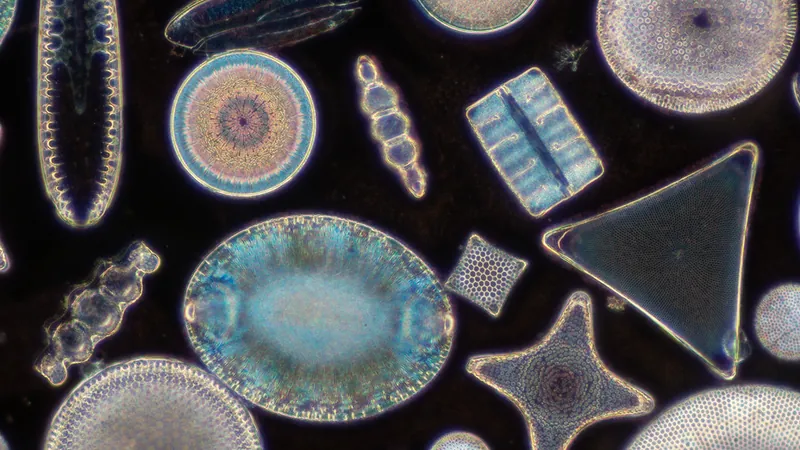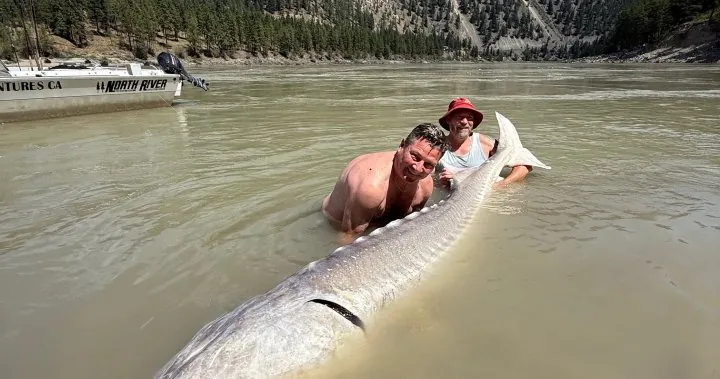
Unleashing AI: Revolutionizing Image Analysis for Diatoms in Biogeosciences!
2024-11-06
Author: Jacques
Introduction
Recent advancements in machine learning are transforming the way scientists analyze and document aquatic microorganisms, particularly diatoms. These intricate, glass-like organisms play a crucial role in our planet's ecosystems, contributing significantly to carbon sequestration and oxygen production through photosynthesis. However, with thousands of species to differentiate, manual identification of diatoms from sediment samples can be notoriously challenging and prone to error.
Challenges in Diatom Identification
Historically, researchers faced roadblocks when trying to track changes in diatom communities, especially in connection with environmental shifts driven by climate change. This is where artificial intelligence steps in to dramatically improve the accuracy and efficiency of image analysis.
The Power of Convolutional Neural Networks
Using sophisticated techniques such as Convolutional Neural Networks (CNNs), scientists can analyze microscopic images of sediments like never before. Unlike traditional neural networks, CNNs are adept at recognizing intricate patterns and can transfer learned insights across different areas of an image. This allows for a comprehensive understanding of microfossil communities and enhances the specification of diatom populations by efficiently identifying their distinct silica structures, known as frustules.
A Groundbreaking Study
In a groundbreaking study published by Godbillot and colleagues in the Journal of Geophysical Research: Biogeosciences, a novel approach using deep learning algorithms is employed to more accurately catalog diatom communities. This marks a pivotal shift in biogeoscience tools, paving the way for the application of machine learning techniques across various ecological datasets that have been previously difficult to interpret.
Implications for Ecosystem Management
The implications of this research are vast: as climate change accelerates, being able to monitor and respond to shifts in microscopic communities becomes imperative for ecosystem management and conservation efforts. The adoption of CNNs in this field promises not only improved identification of diatoms but also an array of applications in marine biology and environmental monitoring.
The Future of Biogeosciences
With machine learning technology rapidly evolving, expect an increasing presence of AI-driven analysis tools in biogeosciences. The future of studying our planet’s delicate ecosystems is here, and it is powered by cutting-edge AI capabilities!
Conclusion
Stay tuned as this exciting field continues to unravel the mysteries of our underwater worlds!









 Brasil (PT)
Brasil (PT)
 Canada (EN)
Canada (EN)
 Chile (ES)
Chile (ES)
 Česko (CS)
Česko (CS)
 대한민국 (KO)
대한민국 (KO)
 España (ES)
España (ES)
 France (FR)
France (FR)
 Hong Kong (EN)
Hong Kong (EN)
 Italia (IT)
Italia (IT)
 日本 (JA)
日本 (JA)
 Magyarország (HU)
Magyarország (HU)
 Norge (NO)
Norge (NO)
 Polska (PL)
Polska (PL)
 Schweiz (DE)
Schweiz (DE)
 Singapore (EN)
Singapore (EN)
 Sverige (SV)
Sverige (SV)
 Suomi (FI)
Suomi (FI)
 Türkiye (TR)
Türkiye (TR)
 الإمارات العربية المتحدة (AR)
الإمارات العربية المتحدة (AR)